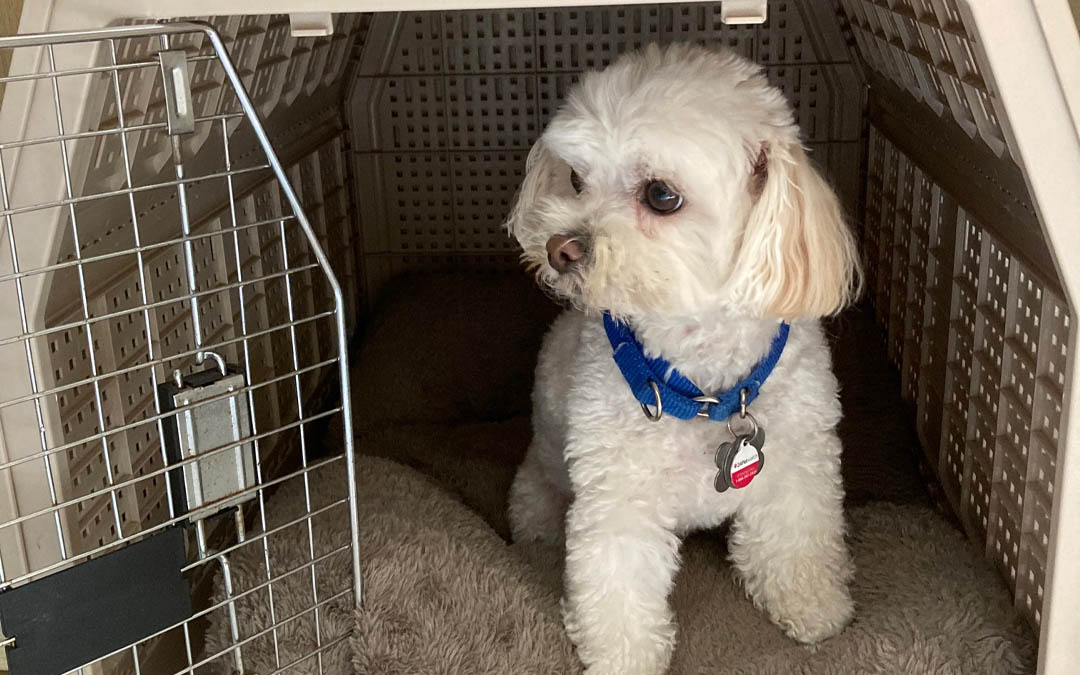Would you like to create a safe and cozy place for your dog? Build a stronger relationship? Help potty train a new puppy? Crate training may be the answer. Dogs are den animals and a crate can become their safety zone. A crate can also provide relaxing, safe place when you can’t keep an eye on the dog or if your dog isn’t comfortable with strangers. And if you must evacuate your home, a crate will help you keep your dog safe. Even the best trained dogs can run off in a stressful, traumatic situation.
Most dogs will readily train to a crate if it is introduced gently and with patience – as is the case with all training. To begin, choose a crate large enough for your dog to stand, turn around, and lie down. If you provide too much space, especially if using the crate for potty training, your new pal may go to the bathroom in one end of the crate. You and your dog may prefer a more enclosed airline-type crate or a wire one that allows greater visibility. Airline crates can be more portable if you need to move your dog in an emergency. Wire crates often come with dividers, which can be helpful for a growing puppy. Next, cover the floor with a comfortable pad that your dog isn’t liable to chew up. You can also cover all or part of a wire crate with a blanket or sheet to create a more restful place for your dog.
Please remember that a crate isn’t a cage for punishment, but a place for your dog to rest or find comfort in stressful times. It’s important not to allow children to enter the crate. Even an easy-going best friend can feel trapped if a child crawls in with them. And for a handful of dogs, especially those with separation anxiety or previous improper crate training, using a crate is not necessarily a positive experience. They may hurt themselves struggling to get out, so finding an alternative should be considered.
Crate training is a different experience for each dog. Some will take to it quickly, others may take a long time. Don’t rush the process. The goal is to have your dog want to go in the crate.
When you start training your dog to enjoy their crate, leave it in a quiet space away from the hustle and bustle of noisy activities. Let them check it out on their own, sniff it, explore. Then invite them to go in and toss a tasty treat near the door. If they’re comfortable, toss treats inside the crate and praise them for entering. Do NOT close the door yet, your dog needs to know they can go in and out.
Once you feel they’re comfortable going in and out, close the door briefly. If the dog chooses to stay in the crate, praise them, that is great! Repeat this several times or until you sense they are getting comfortable. Then, gradually extend the time with the door closed. As training advances, allow your dog to relieve themselves prior to spending time in a crate. A small hanging water bowl can clip to the door. Remember, it is not a good idea to leave your dog in the crate for long periods of time.
Crate training your puppy or dog can be a valuable tool with a variety of benefits. Used correctly a crate can be a safe, cozy, quiet place for a dog to rest or find comfort, while giving you peace of mind that your best buddy is happy in a “room to call their own.”
~Jill Simpson and Mary Henry

